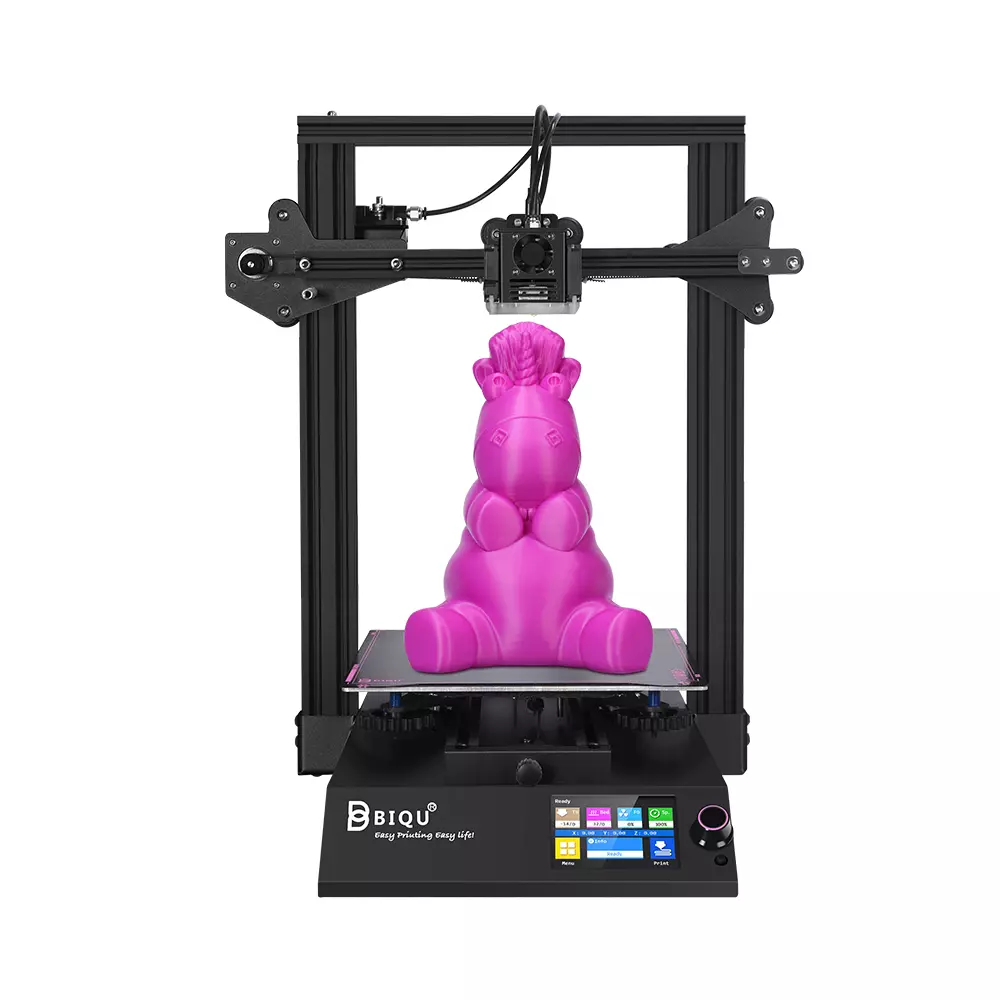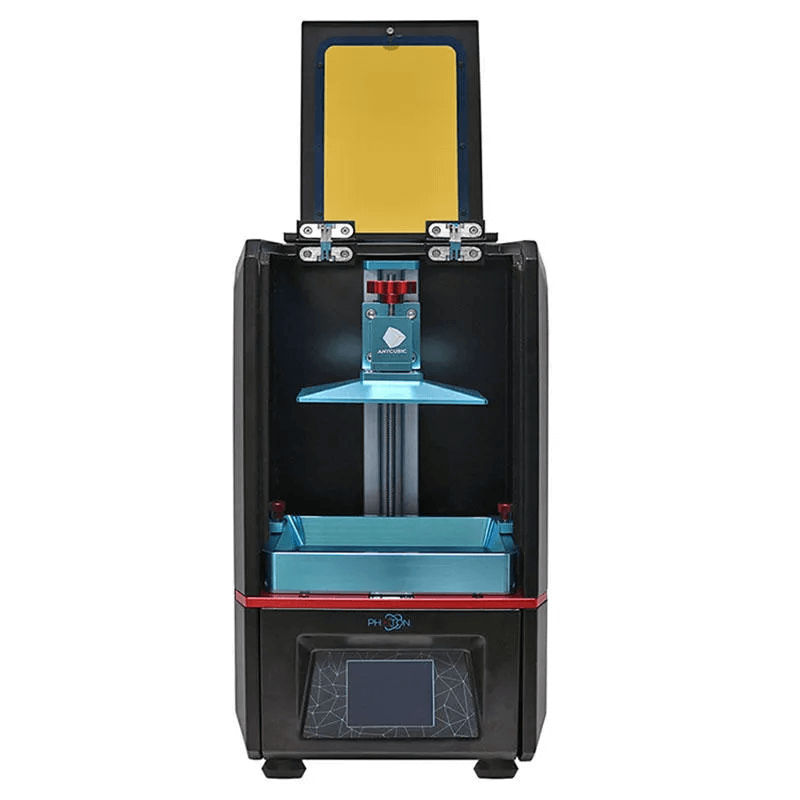Compare BIQU B1 vs Photon
Comparison between the best 3D printers
Choose the best 3D printer at the best price. The cheapest 3D printers are here.
Buy a 3D printer here with 3D Fila.
 |
 |
|
| Model | BIQU B1 |
Photon |
| Printing Material | Filament | Resin |
| Buy Filament for BigTreeTech BIQU B1 | Buy Resin forAnycubic Photon | |
| Estimated price | $269,00 | $100,00 |
| Manufacturer | BigTreeTech | Anycubic |
| Release Year | 2020 | 2019 |
| Print Volume [mm] | 235x235x270 | 65x115x155 |
| Printer Size [mm] | 412x402x492 | 220x200x400 |
| Weight [kg] | 8,00 | 7,2 |
| Power Loss Recovery | YES | NO |
| Maximum Resolution [mm] | 0,1 | |
| Processor | 32 Bits BTT SKR V 1.4 | |
| Display | Touchscreen TFT 3,5'' | Touchscreen TFT 3,5'' |
| Power Supply | 24V / 360W | 40W |
| Connectivity | SD / USB | USB |
| Operating systems | Windows, Mac, Linux | Windows, Mac, Linux |
| Date of registration in the system | 2021-04-14 | 2021-04-15 |
| Release date | 2020 | 2019 |
| Extra features | The BIQU B1 is an advanced 3D printer with a silent 32-bit BTT SKR V1.4 motherboard and ARM Cortex-M3 CPU, offering DIY interfaces (I2C, SPI, WiFi) and dual Z-axis. Its dual BTT B1 TFT35 V3.0 operating system allows real-time monitoring and multiple printing modes, including G-code visualization effects. It stands out for its BIQU SSS (Super Spring Steel), ensuring easy model adhesion and simplified removal, with the possibility of using it on both sides. It includes a filament sensor, automatically pausing printing in case of filament breakage. The multicolored RGB lights integrated into the hotend allow you to view the printing status even at night. Additional notes include the need for a BIQU-specific Type-C cable and extra interfaces for smart filament sensor and BL Touch. | The Anycubic Photon DLP is a resin 3D printer that stands out for its affordability and quality. It uses DLP (Digital Light Processing) technology to cure resin layers with precision, offering resolution of 25-100 microns. Its build volume is 115 x 65 x 155 mm, suitable for modest-sized projects. It includes a 2.8-inch touchscreen, USB and SD card connectivity, and a carbon filter to mitigate odors. It is notable for generating efficient support structures through its custom slicing software. Although it requires care in resin handling and post-processing, it is an excellent option for beginners and professionals who want to explore resin 3D printing with high resolution and ease of use. |
| Support for multiple colors and materials (AMS and CFS) | NO | NO |
Notes * |
||
| Cost-benefit | 6 / 10 | 6 / 10 |
| Hardware | 2 / 10 | 0 / 10 |
| Tela | . | . |
| Print volume | 3 / 10 | 3 / 10 |
| Performance | 0 / 10 | 0 / 10 |
Conclusion |
| In conclusion, the comparison between the BIQU B1 and Anycubic Photon reveals distinct advantages and disadvantages tailored to different user needs and preferences in the realm of 3D printing. The BIQU B1 is positioned as a more advanced and versatile option, characterized by its larger print volume capabilities and robust features such as a filament sensor and power loss recovery. This printer caters well to users looking for a reliable and adaptable machine suitable for a variety of projects. Its silent operation, advanced motherboard technology, and additional features like RGB status lights enhance the user experience, making it a strong contender for those who prioritize both functionality and ease of use. On the other hand, the Anycubic Photon offers affordability and high-resolution output, making it an attractive option for those entering the world of resin printing or who require precise detail in smaller prints. While it has its limitations in terms of build size and the complexities involved with resin handling, it remains an excellent choice for users focused on achieving intricate details in their prints. Ultimately, the decision between the two printers may hinge on specific printing needs, budget constraints, and whether the user prioritizes versatility and larger build volumes or high-resolution prints in smaller formats. Both printers serve their respective niches well, with the BIQU B1 leaning towards broader capabilities and the Anycubic Photon focusing on detail and affordability. |

